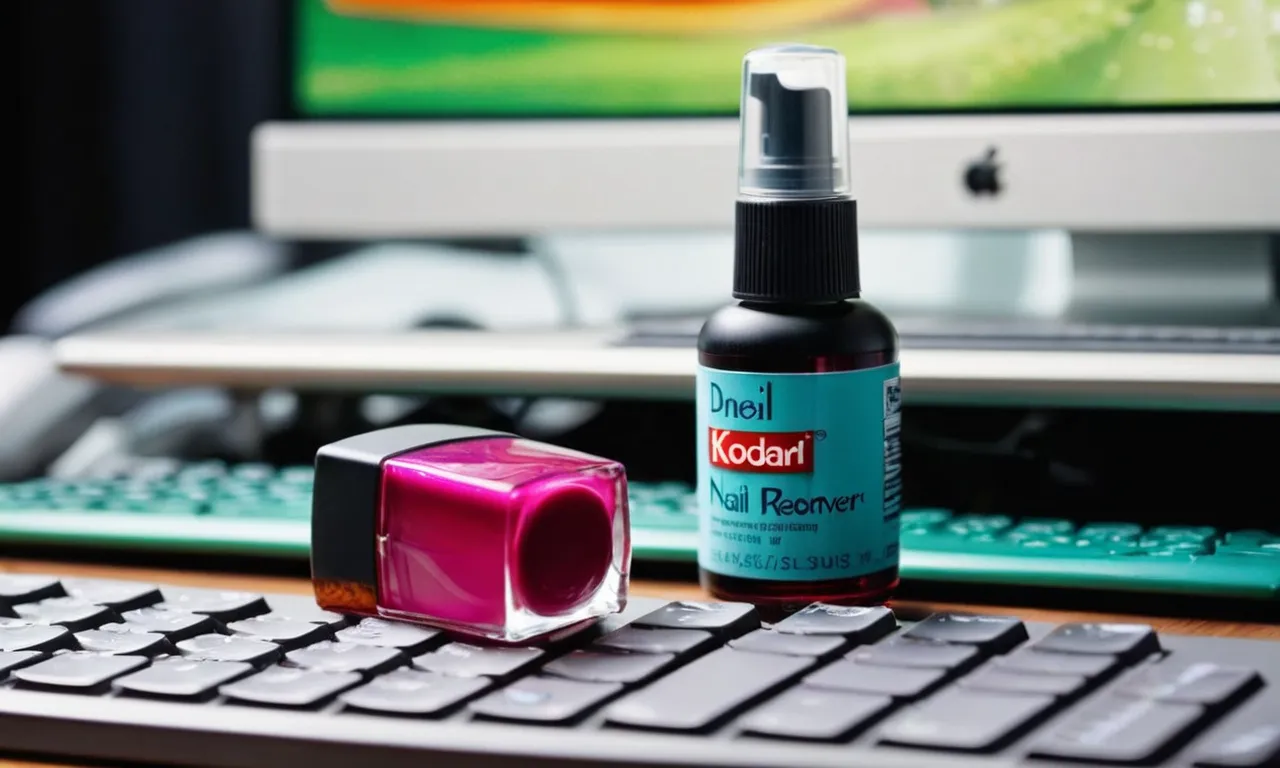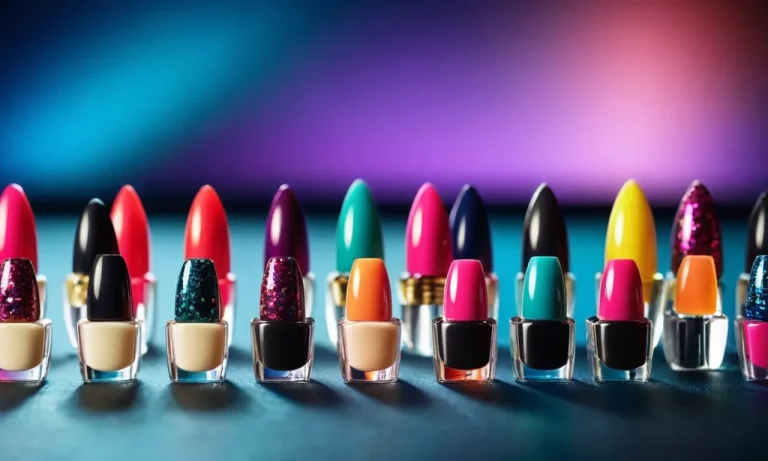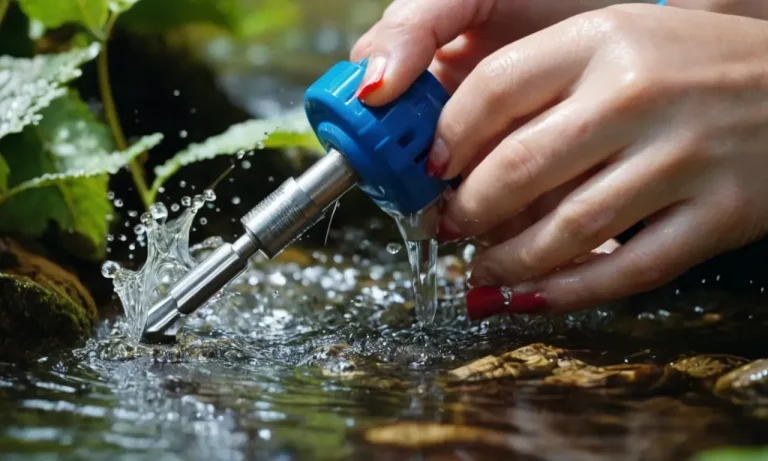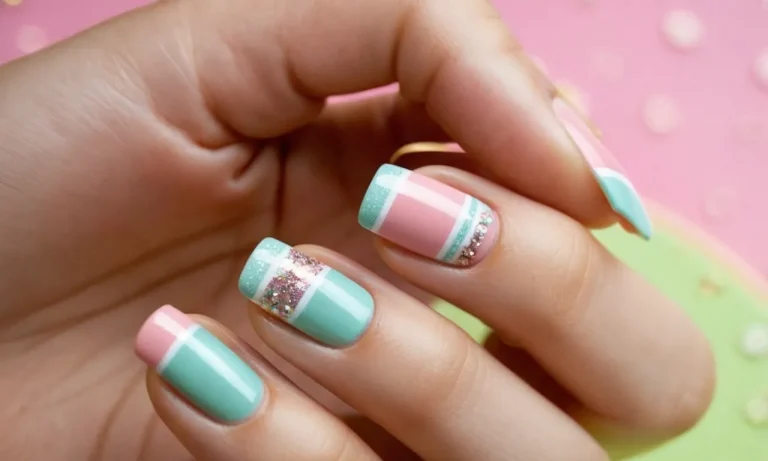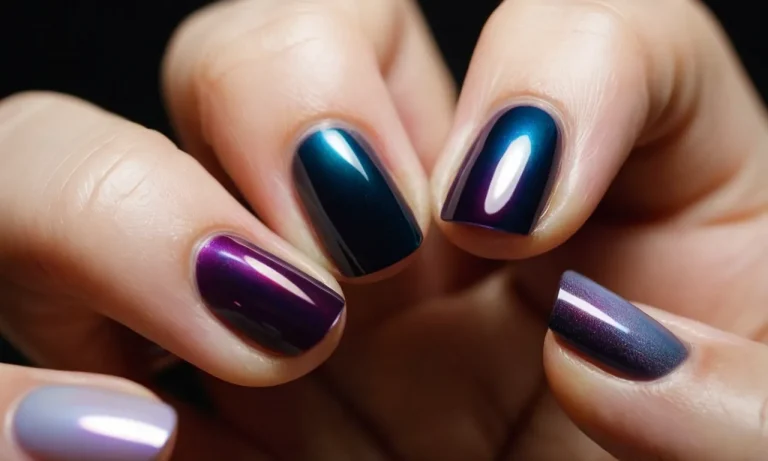Can I Use Nail Polish Remover To Clean Electronics?
Cleaning electronics can be tricky business. Using the wrong type of cleaner can damage sensitive components. So what about using nail polish remover? This common household product seems gentle enough for shiny surfaces, but is it really safe for your devices?
If you’re short on time, here’s a quick answer to your question: It’s generally not recommended to use nail polish remover containing acetone or other harsh chemicals to clean electronics. A mild alcohol-based electronic cleaner is a safer bet.
In this comprehensive guide, we’ll cover everything you need to know about using nail polish remover on electronics. We’ll look at the different ingredients in removers and their risks, provide tips on electronics safe cleaners, and give a final verdict on whether nail polish remover can safely clean gadgets.
Ingredients in Nail Polish Removers
Nail polish removers contain various ingredients that allow them to dissolve and remove nail polishes. The most common ingredients found in nail polish removers are acetone, acetate solvents, and alcohol.
Acetone
Acetone, also known as propanone, is the most common active ingredient found in nail polish removers. It is a colorless, flammable organic compound that can dissolve both water-based and oil-based nail polishes.
According to a 2021 report from Grand View Research, the global acetone market size was valued at USD 4.3 billion and is expected to grow in the coming years.
Acetone works by breaking down the ingredients that form the nail polish, allowing it to be wiped or rinsed off. Typically, nail polish removers contain 60-90% acetone. The higher the acetone concentration, the faster and more effective the nail polish remover is.
While acetone is an effective solvent, it can be harsh on the skin and nails with repeated use. Some warnings associated with acetone include dryness, redness, cracking of the skin and nails. Using moisturizers after removing nail polish can help replenish moisture.
Acetate Solvents
Some nail polish removers use acetate solvents instead of acetone. Common acetate solvents include ethyl acetate and butyl acetate. They are organic compounds that can dissolve nail polishes without being as drying or damaging to skin and nails as acetone.
However, acetate solvents may not be as effective at removing darker, glitter, or gel polish varieties. Combining them with other dissolving agents like alcohol can help boost their performance. According to a 2022 survey by Nail Polish Supply, over 65% of professional nail salons use an acetone and acetate solvent blend in their nail polish removers.
Alcohol
Some nail polish removers also contain alcohol as an ingredient. Types of alcohol used include ethyl alcohol, isopropyl alcohol, and denatured alcohol. Alcohol helps break down nail polish and disinfect the nail and cuticle area both before and after polish is applied.
Many popular retail nail polish remover brands use a blend of acetone, acetate solvents, and alcohol at varying concentrations. Finding the right balance of ingredients allows maximum polish removal without excessive skin and nail damage.
Refer to the ingredients label when selecting a nail polish remover and test on a small area first.
Potential Risks of Using Nail Polish Remover on Electronics
Can Damage Plastics and Coatings
Using nail polish remover like acetone on electronics can cause damage to plastic components and protective coatings. Acetone is a powerful solvent that can dissolve or soften many plastics used in electronics manufacturing.
For example, acetone can damage the plastic casing on devices, causing cracks or distortions. It can also strip off coatings applied to circuit boards or other internal components. This leaves the electronics vulnerable to moisture, corrosion and short circuiting.
According to an article on iFixit, acetone will attack the shellac coating on transformers in vintage electronics.
Leaves Residue Behind
Another risk with nail polish remover is that it leaves behind a residue after evaporation. This sticky, gummy residue can get stuck in tiny spaces of electronics. It can prevent electrical contacts from making proper connections, leading to device malfunctions.
The residue can also trap heat and affect thermal performance. Additionally, chemical residues act as contaminants which can accelerate wear and degradation of electronics over time.
Experts like Kyle Wiens, CEO of iFixit, warn that you should never use nail polish remover on circuit boards because it leaves conductive, corrosive residues. This buildup of contaminants can slowly destroy electronics through increased oxidation and short-circuiting.
Conductive and Corrosive
Nail polish removers containing acetone have inherent physical properties that make them unsafe for electronics cleaning. Firstly, acetone is considered a conductive solvent, meaning it carries electrical current.
Spilling acetone onto a live circuit board can cause short circuiting, electrocution hazards, or complete device failure.
Secondly, acetone is chemically corrosive through its solvent action. It erodes and degrades many plastics, coatings and adhesives used in electronics manufacturing. These corrosive effects weaken devices from the inside over time.
According to CuriousInventor.com, cleaning agents for electronics should never be conductive, corrosive or leave residue. Unfortunately acetone nail polish remover fails on all three criteria, making it too risky for cleaning sensitive electronics.
Electronics-Safe Cleaning Tips
Use Isopropyl Alcohol
Isopropyl alcohol, also known as rubbing alcohol, is a great cleaning solution for electronics. It quickly evaporates, doesn’t leave residue, and is non-conductive. To safely clean electronics, dip a cotton swab or microfiber cloth in 70% isopropyl alcohol and gently wipe down the device.
Avoid getting moisture in any openings. Isopropyl alcohol can be used on phones, tablets, laptops, keyboards, mice, monitors, and more. Just don’t use it on tablet or phone screens as it can strip off oleophobic coatings.
According to a 2021 survey by the American Cleaning Institute, 91% of Americans have isopropyl alcohol in their homes. This ubiquitous cleaning product can be picked up for a few dollars at any drugstore or supermarket.
Isopropyl alcohol is highly effective at removing dirt, dust, fingerprints, and even some light corrosion from electronics contacts. When used properly, it’s hands-down one of the best and safest cleaners for electronics.
Specialized Electronic Wipes
Pre-moistened wipes designed specifically for cleaning electronics are another great option. Brands like Care Touch and Screen Mom produce packs of individually wrapped wipes for cleaning phones, tablets, TVs, computers, and other electronics.
The main active ingredient in these wipes is typically 70% isopropyl alcohol, along with small amounts of deionized water and additive ingredients.
Electronic wipes offer a few advantages over liquid isopropyl alcohol. They are pre-moistened with just the right amount of solution and ready to use straight out of the package. The textured material lifts away dirt, dust, oils, and smudges.
Finally, the wipe format makes it easy to clean hard-to-reach spots on electronics. On the downside, electronic wipes tend to cost more per use than isopropyl alcohol.
Microfiber Cloth
A good microfiber cloth can remove dust, fingerprints, and surface dirt from electronics. Made from ultra-fine synthetic microfibers, these cloths are highly absorbent and soft enough to clean delicate surfaces without scratching them.
To effectively clean electronics, slightly dampen the microfiber cloth with water or a 50/50 mix of water and isopropyl alcohol. Avoid using a fully saturated cloth, as moisture can damage electronics.
High-quality microfiber cloths designed for cleaning glass and screens typically work best. These are reusable and last through countless washes. While a dry microfiber cloth alone doesn’t eliminate oils and grime as well as alcohol-based cleaners, it remains a budget-friendly option for routine dusting and fingerprint removal on electronics.
Just launder the cloth regularly to prevent dirt buildup.
The Verdict: Should You Use Nail Polish Remover on Electronics?
Using nail polish remover on electronics is generally not recommended. Here are some key reasons why you should avoid using it to clean your devices:
1. Nail polish remover can damage plastic components
Most electronics contain plastic parts like buttons, casings, screens etc. The acetone in nail polish remover can cause plastic to become brittle and crack over time. This can lead to components breaking or screens cracking from the pressure of normal use.
2. It can strip away protective coatings
Many electronics have special protective layers like oleophobic coatings on screens or waterproof coatings. Using nail polish remover can strip away these coatings, leaving your devices more vulnerable to damage from fingerprints, liquids, scratches etc.
3. Corrosion risk to electronic circuits
Nail polish remover contains ingredients like acetone that can be corrosive to the tiny electronic circuits and connections inside your devices. This can lead to corrosion and component failure over time.
4. Risk of electrical shorts
Getting nail polish remover into gaps like headphone jacks or charging ports increases the risk of electrical shorts, which can permanently damage your electronics.
5. Can dissolve adhesives
The glues and adhesives holding components in place can be dissolved by nail polish remover. This can cause parts to become loose or fall out entirely.
Some safer alternative options include:
- Distilled water dampened microfiber cloth
- Isopropyl alcohol wipes
- Mild dish soap and water solution
- Compressed air
- Blu-Tack to lift away dirt and debris
Be sure to avoid getting moisture in any openings and always power electronics off and unplug them before cleaning. Gentle wiping motions are best rather than rubbing aggressively. With the right mild cleaning methods, you can keep your electronics looking their best without the risk of damage over time.
Conclusion
While using nail polish remover on electronics may seem like a quick and easy cleaning solution, it does come with risks. The acetone and other harsh solvents can damage plastic casings and coatings, leave behind residue, and even corrode circuitry in some cases.
For safe, effective cleaning, your best bets are isopropyl alcohol, dedicated electronic wipes, or a clean microfiber cloth. With the right methods and products, you can keep your devices looking their best without taking chances.

